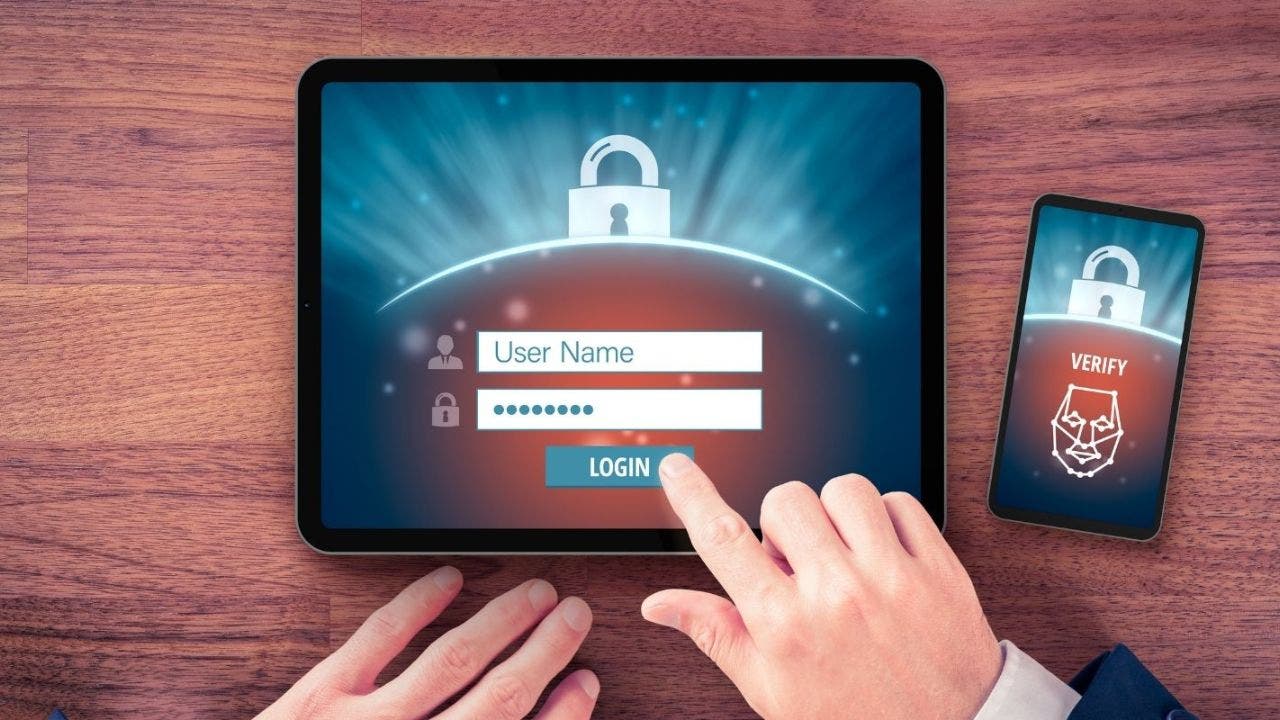Have you ever had that sinking feeling that something’s not quite right with your computer? Maybe it’s running slower than usual or there are new icons on your desktop that you don’t recognize. Well, you might not be just imagining things; you could have been hacked.
While the first reaction may be to panic, the best possible first step if you think you’ve been hacked is to disconnect your computer from the internet and take a deep breath. If you’ve got antivirus software already installed, run the scan immediately. But don’t worry just yet. Before you start fretting about cyberthieves and lost data, let’s take a moment to walk through some crucial steps together. From running a trusty antivirus scan to the nitty-gritty of browser settings and remote access – this is your go-to guide for outsmarting those pesky hackers.
GET SECURITY ALERTS, EXPERT TIPS – SIGN UP FOR KURT’S NEWSLETTER – THE CYBERGUY REPORT HERE
A woman grabbing her computer in frustration (Kurt "CyberGuy" Knutsson)
Were you hacked?
1. Run antivirus software ASAP
When you’re running any antivirus scans or troubleshooting, start from the actual antivirus software program. Don’t follow pop-ups or notifications. If there is indeed a compromise, it should show up on the dashboard of the antivirus software program.
Preventative:
Keep your antivirus software updated. Hackers are coming up with new viruses often, so if you are up to date, you’re less likely to be compromised. Or the virus is more likely to get caught.Be familiar with your antivirus software notifications and alerts, so if you ever get a pop-up or notification, you’ll be more apt to notice fake ones.Write down the contact information of the antivirus software you’ve installed and have it near the computer.
If you feel pretty confident that you’ve unfortunately been hacked, but your antivirus scan comes up empty, take a break and call customer service of antivirus software directly. Do not follow links to have a rep call you. Use the number you’ve written down, and call them directly so you know you’re not being duped.
If you don’t have antivirus software installed, make sure to install one and do a computer scan.You can find our top recommendations here.
ASK ANY TECH QUESTION AND GET KURT’S FREE CYBERGUY REPORT NEWSLETTER HERE
A man typing on keyboard (Kurt "CyberGuy" Knutsson)
HOW TO RECOVER A HACKED FACEBOOK ACCOUNT
2. Reformat or reset to factory settings
Sometimes a virus or other nefarious entities have overrun the computer so badly that you might need to simply reformat or reset it to factory settings. If you’ve uninstalled or deleted suspicious programs or applications only to have them reload upon restarting your computer, you may simply need to start from scratch. This is why it is crucial to have recent backups of your data. Our article, “How to securely get rid of your old PC or Mac,” outlines how to reset to factory settings or reformat your computer.
EXPERT TIPS, LEGIT REVIEWS.GET THE FREE CYBERGUY REPORT NEWSLETTER
3. Delete settings or extensions on browsers or uninstall and reinstall browsers completely
There have been many times I have gone to help my mom with her online accounts, only to be inundated with pop-ups, redirects or random links on her browser bar or menu. It turned out that she had either accidentally downloaded extensions that embedded themselves in the browser or, worse, changed the browser setting to open a spammy website as her main search engine or landing page. You can go to settings or preferences and delete extensions you do not recognize. But if these settings or extensions keep reappearing after deleting and restarting the browser, it is likely a bigger problem. Then, uninstall the browser and see if you can reinstall it. If that brings up the same settings again, then it could be a much more invasive virus or malware that needs to be addressed with an antivirus scan or assistance from a professional.
HOW TO OUTSMART CRIMINAL HACKERS BY LOCKING THEM OUT OF YOUR DIGITAL ACCOUNTS
4. Turn off or restrict remote access
While it is harder for hackers to access your computer if it is completely turned off, if you have allowed remote access, a hacker just needs your computer to be hooked up to a network or the internet in order to take over your device and turn it on.
To prevent remote access to your PC:
Click the Windows Start buttonInput Remote Desktop settings in the search barIn the Remote Desktop settings, ensure that the slider under “Enable Remote Desktop” is set to Off.Review your current processes in Task Manager (Ctrl+Alt+Del) for any unusual or suspicious activities
To prevent remote access on Macs:
Click the Apple logo icon in the top left corner.Click System SettingsTap General Click the Sharing iconScroll down and uncheck the boxes next to Remote Login and Remote Management to prevent unauthorized remote access.
A woman on her laptop (Kurt "CyberGuy" Knutsson)
HOW HACKERS CAN CRAFT AN ATTACK FROM YOUR SOCIAL MEDIA PROFILE
5. Review your activity monitor on your computer and network traffic patterns
Periodically, checking your computer’s activity monitor to check which programs are running and what is using up the most bandwidth is a healthy practice. It will teach you to spot any programs or traffic that is unusual or if someone else is connecting to your computer remotely.
To review this activity on your PC:
Go to Control PanelClick Administrative ToolsIn Event viewer, look for the events that are related to startup and shutdown. Any shutdown will be listed there and which program or user-initiated that startup or shutdown. This way, you can see if these actions are that of a virus or an update process.
To review this activity on your Mac:
Go to the menu bar on the top left when you first log on to your account.Select GoIn the drop-down menu, select UtilitiesWhen a menu pops up, one of the first options should be Activity Monitor.
Or:
Go to your Applications folder on your dock (usually located on the bottom or right-hand side of the screen)Go to Utilities folderSelect Activity Monitor
A man putting in his username and password on tablet (Kurt "CyberGuy" Knutsson)
Top 3 preventative measures to not get hacked
1. Turn on 2-factor authentication
While it may seem like a pain to enter a code received via email or text each time you sign in, this extra step is crucial for security. By activating two-factor authentication, you create a barrier against unauthorized access. Even if a hacker discovers your email or username, they won’t get far without the unique code.
Each login attempt triggers a notification, alerting you to potential threats. Repeated failed attempts will secure your account by either locking it or sending you an alert. In the event of suspicious activity, you can swiftly use a trusted device to reset your password and inform the service provider. It’s a small price to pay for significant protection against cyberthreats.
A man backing up his computer (Kurt "CyberGuy" Knutsson)
2. Have strong antivirus software
The best way to protect yourself from clicking malicious links that install malware in an attempt to get access to your private information is to have antivirus protection installed on all your devices. This can also alert you of any phishing emails or ransomware scams. Plus, think of it like having a digital bodyguard – always on the lookout, always ready to defend you from cyberthreats. Get my picks for the best 2024 antivirus protection winners for your Windows, Mac, Android & iOS devices.
3. Configure your email settings
Configure email settings to not automatically images or attachments (Kurt "CyberGuy" Knutsson)
If you configure your email settings to not automatically load content such as images or attachments, then it is harder for viruses or other malware to be automatically downloaded or accidentally opened. If you also have emails received first in rich text format, you can choose which emails load fully with images once you realize it is from a trusted source.
Gmail desktop:
Click the settings gear iconChoose See all settingsUnder the General tab, scroll to the Images section.Select Ask before displaying external imagesScroll to the bottom of the page and click Save Changes
Gmail mobile:
Tap the hamburger menu (3 horizontal lines)Select SettingsChoose the account you want to manageScroll to the Images section and select Ask before displaying external images.
Apple mail:
First, click on Mail in your dock at the bottom of your screenThen click on Mail in the upper left of your screenClick SettingsGo to the Viewing tabUncheck Load remote content in messages
Outlook desktop (PC):
Click FileChoose OptionsSelect Trust CenterClick Trust Center SettingsUnder Automatic Download, check the option that says Don’t download pictures automatically in standard HTML email messages or RSS items.
Outlook desktop (Mac):
Open OutlookClick PreferencesUnder Email select ReadingChoose SecuritySelect Never to prevent image downloads
Yahoo Mail desktop:
Click Settings.Choose More Settings.Click Viewing email.Under Show images in messages, select Ask before showing external images.
Start Mail desktop:
Please note that the exact wording of the menu items and options can vary based on the version of Start Mail you are using.
Open Start MailClick on the Settings iconNavigate to the Email sectionLook for the Images or Privacy settingsChoose the option to Ask before displaying external images or a similar setting that controls the automatic downloading of pictures.
These steps should help enhance your email security by giving you control over which images are displayed, thereby reducing the risk of malware being automatically downloaded or opened. Always ensure your email application is updated to the latest version for the best security practices.
Looking for private and secure email solutions? See Best Private and Secure Email Providers 2024
QUICK TIPS. EXPERT INSIGHTS. CLICK TO GET THE FREE CYBERGUY REPORT NEWSLETTER
Data recovery: Protecting your information against loss
This may not seem relevant to an article about hacking, but having your data off your computer and safely on an external hard drive or the cloud will give you more options if you think you’ve been hacked. If you need help deciding what type of data backup would be best for you, please take a look at these articles:
How to back up your Windows or Mac computerHow to back up your devices the right way
If a hack is bad enough, sometimes a complete wipe of your system is the only way to salvage your computer. If you have a safe copy of your data, while it might be inconvenient, you will not lose all your data. Also, if you keep more sensitive data off your more frequently used computer, then your data is less likely to be compromised if you get hacked.
Kurt’s key takeaways
At the end of the day, being hacked is a massive inconvenience and can potentially lead to data loss or theft. But don’t lose hope. There are steps you can take to outsmart those pesky hackers and keep your devices secure. The key is staying vigilant and taking preventative measures like using strong antivirus software, enabling two-factor authentication and regularly backing up your data. That way, if you do get hacked, you’ll have a recent backup to rely on and can simply wipe your device clean without losing everything.
It’s also crucial to keep an eye out for any suspicious activity on your computer or network. If something seems off, don’t hesitate to run a full antivirus scan and review your activity monitor for any unauthorized access or programs running in the background. Remember, hackers are always coming up with new tricks, so it’s an ongoing battle to stay one step ahead. But by following the tips outlined here, you’ll be well on your way to keeping your digital life secure and hack-free. Stay vigilant, my friends.
Can you share a personal story where being proactive about computer security paid off or, conversely, where neglecting it led to issues? Let us know by writing us at Cyberguy.com/Contact.
For more of my tech tips and security alerts, subscribe to my free CyberGuy Report Newsletter by heading to Cyberguy.com/Newsletter.
Ask Kurt a question or let us know what stories you’d like us to cover.
Follow Kurt on Facebook, YouTube and Instagram.
Answers to the most asked CyberGuy questions:
What is the best way to protect your Mac, Windows, iPhone and Android devices from getting hacked?What is the best way to stay private, secure and anonymous while browsing the web?How can I get rid of robocalls with apps and data-removal services?
Copyright 2024 CyberGuy.com.All rights reserved.
Kurt “CyberGuy” Knutsson is an award-winning tech journalist who has a deep love of technology, gear and gadgets that make life better with his contributions for Fox News & FOX Business beginning mornings on “FOX & Friends.” Got a tech question? Get Kurt’s free CyberGuy Newsletter, share your voice, a story idea or comment at CyberGuy.com.



